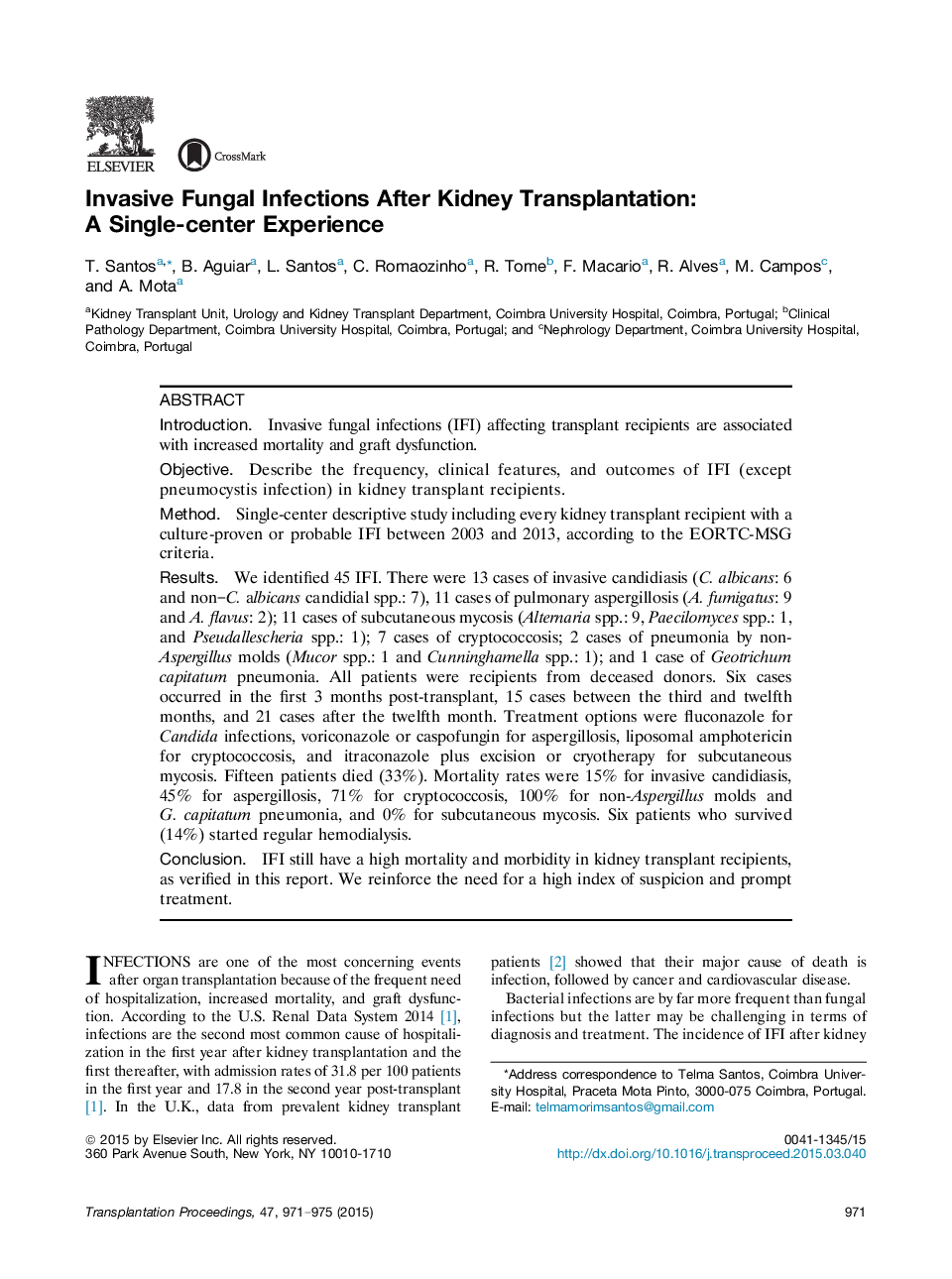| Article ID | Journal | Published Year | Pages | File Type |
|---|---|---|---|---|
| 6247386 | Transplantation Proceedings | 2015 | 5 Pages |
IntroductionInvasive fungal infections (IFI) affecting transplant recipients are associated with increased mortality and graft dysfunction.ObjectiveDescribe the frequency, clinical features, and outcomes of IFI (except pneumocystis infection) in kidney transplant recipients.MethodSingle-center descriptive study including every kidney transplant recipient with a culture-proven or probable IFI between 2003 and 2013, according to the EORTC-MSG criteria.ResultsWe identified 45 IFI. There were 13 cases of invasive candidiasis (C. albicans: 6 and non-C. albicans candidial spp.: 7), 11 cases of pulmonary aspergillosis (A. fumigatus: 9 and A. flavus: 2); 11 cases of subcutaneous mycosis (Alternaria spp.: 9, Paecilomyces spp.: 1, and Pseudallescheria spp.: 1); 7 cases of cryptococcosis; 2 cases of pneumonia by non-Aspergillus molds (Mucor spp.: 1 and Cunninghamella spp.: 1); and 1 case of Geotrichum capitatum pneumonia. All patients were recipients from deceased donors. Six cases occurred in the first 3 months post-transplant, 15 cases between the third and twelfth months, and 21 cases after the twelfth month. Treatment options were fluconazole for Candida infections, voriconazole or caspofungin for aspergillosis, liposomal amphotericin for cryptococcosis, and itraconazole plus excision or cryotherapy for subcutaneous mycosis. Fifteen patients died (33%). Mortality rates were 15% for invasive candidiasis, 45% for aspergillosis, 71% for cryptococcosis, 100% for non-Aspergillus molds and G. capitatum pneumonia, and 0% for subcutaneous mycosis. Six patients who survived (14%) started regular hemodialysis.ConclusionIFI still have a high mortality and morbidity in kidney transplant recipients, as verified in this report. We reinforce the need for a high index of suspicion and prompt treatment.
